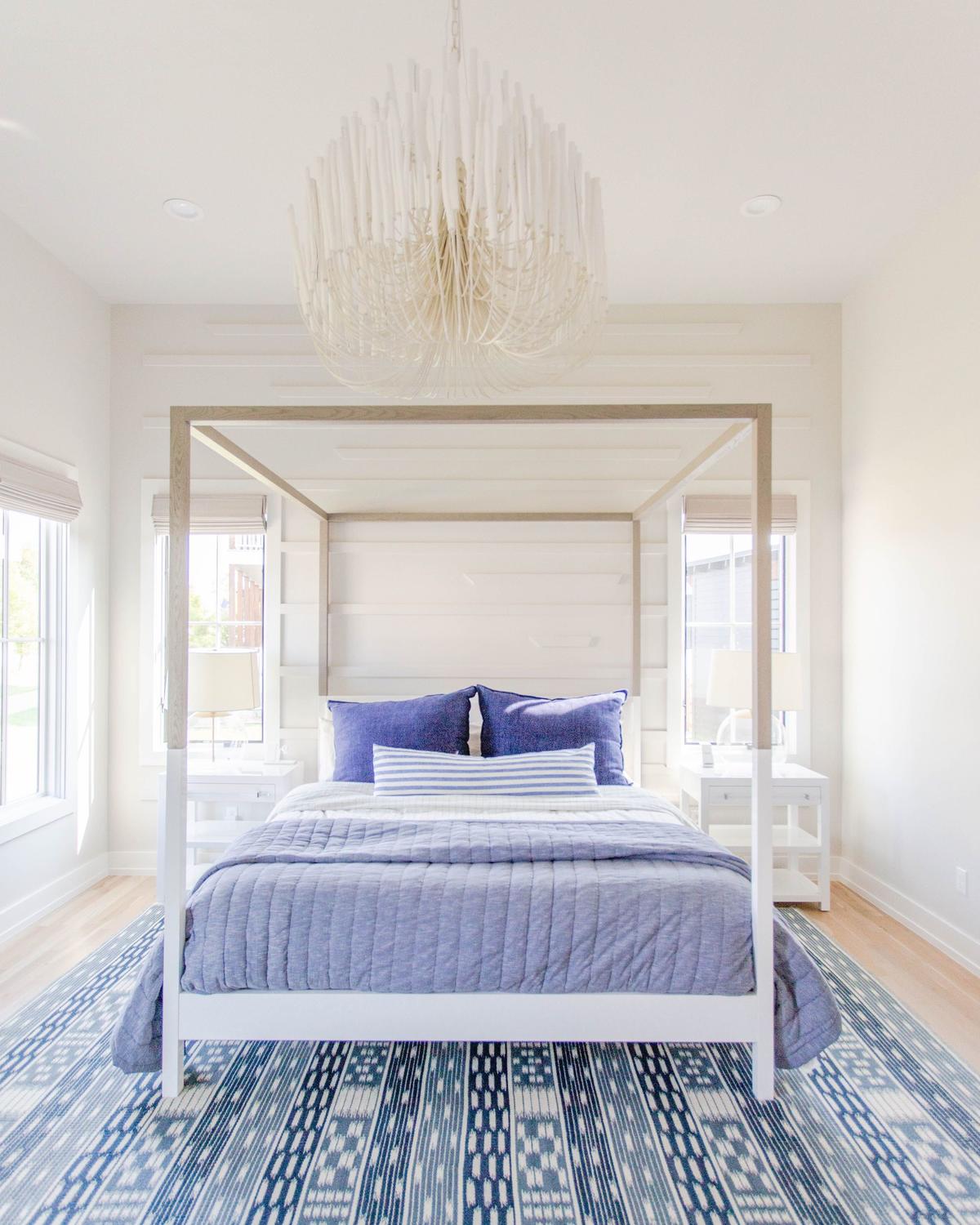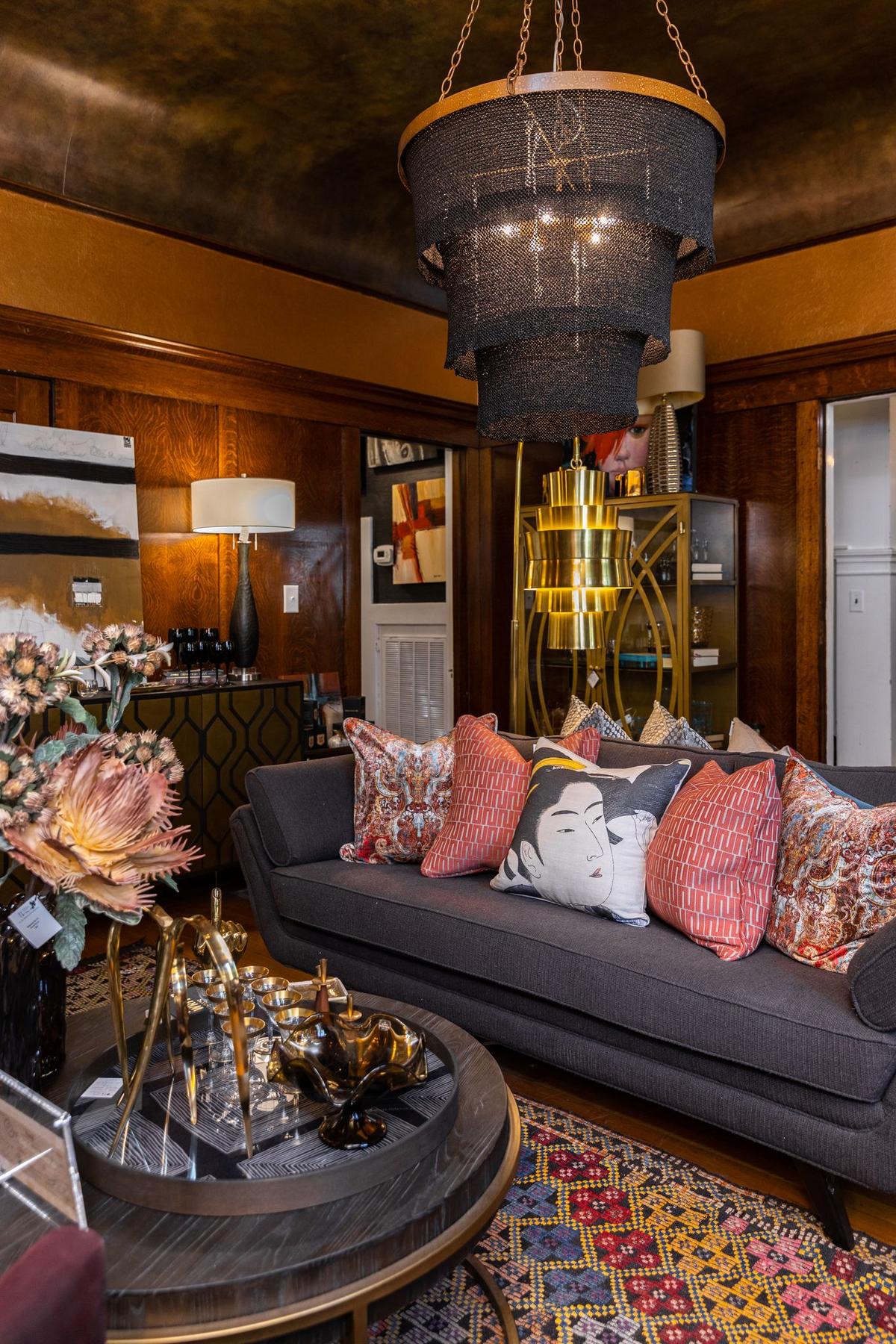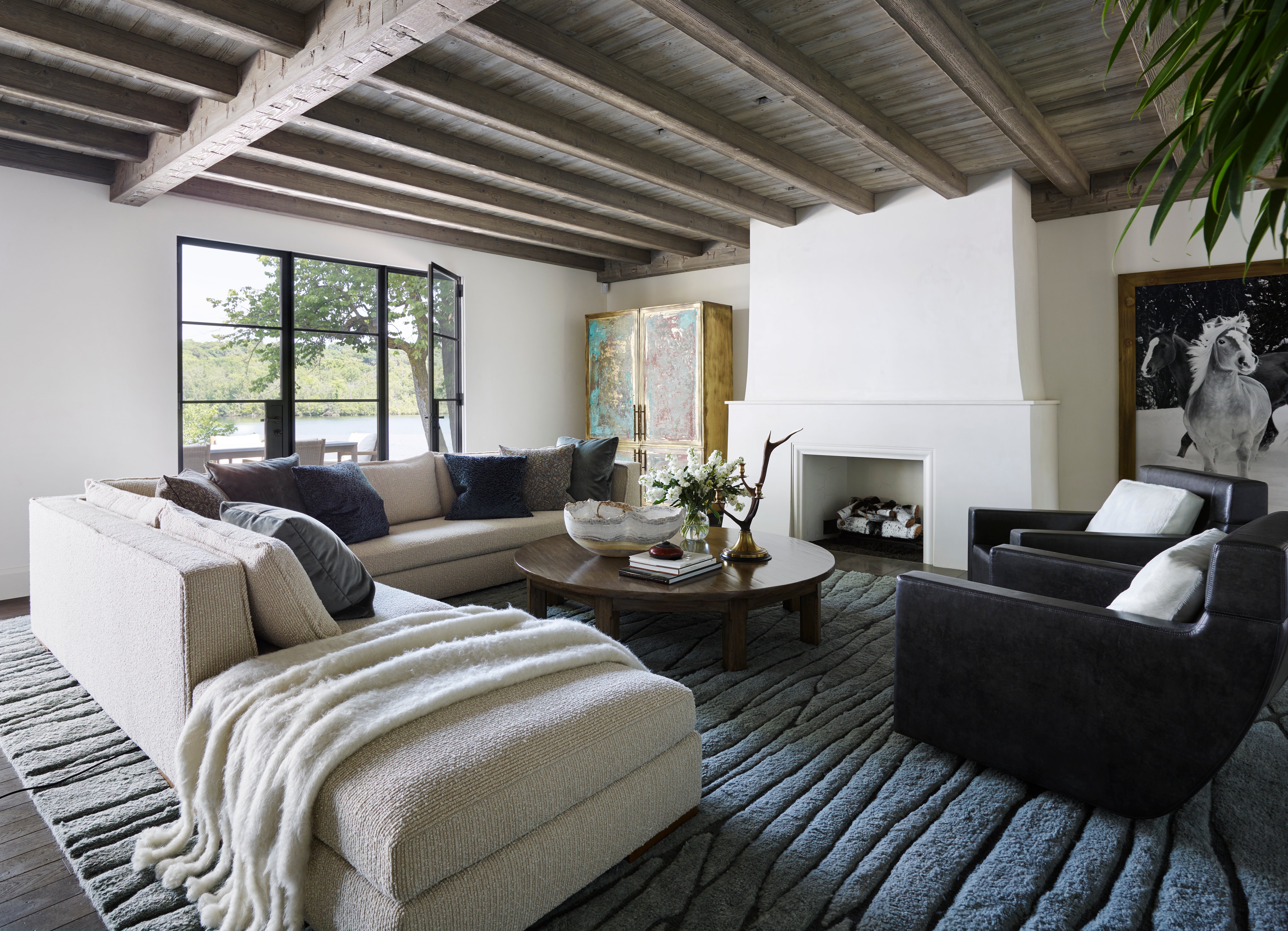There’s a big payoff when designers become stocking dealers—but what does it take to get there? Here’s a step-by-step guide to getting it right.
The discounted pricing trade brands offer designers allows them a better margin on the products they place in their projects. But many companies also offer an even deeper discount—one that comes with more strings, but that can radically transform a firm’s bottom line.
Becoming a stocking dealer generally goes like this: In exchange for purchasing a certain minimum annual order from a vendor and, in most cases, displaying that product in a retail space, a designer will receive a deeper discount than the brand’s typical trade markdown. If there’s one thing to know about stocking dealer relationships, however, it’s that each situation is unique. When it comes to business terms, brick-and-mortar requirements and benefits, each stocking dealer seems to find their own approach. The process is rife with variation on the vendor side, too, forcing designers to map out unique paths to a fruitful partnership. What does it take to land, maintain and maximize the stocking dealer relationship? We set out to uncover the journey to profitability using this pricing model.
Setting up your space
Before pursuing any sort of partnership with a brand, most designers must overcome one major hurdle: the retail space. Stocking dealer relationships are typically contingent upon a designer owning a physical shop or showroom where products can be displayed and sold. It makes sense: Brands are investing in their retail partners by offering better margins in exchange for sales floor exposure and a resulting increase in orders.
Where you choose to put down roots with that physical space influences which lines you’ll be able to carry, too, as certain vendors create strict territories that prevent designers or retailers in close proximity from carrying the same product. Penny Francis, owner of the New Orleans–based design firm and home goods store Eclectic Home, found success as a stocking dealer by rigorously researching which lines local competitors carried and how their product was displayed. In her own 7,000-square-foot retail space, Francis sells lighting, accessories, textiles, furniture, upholstery and case goods, and—living up to the shop’s name—the eclectic styles she showcases range from French antiques to early American pieces and Louisiana-made furniture. It’s a combination she curated to help fill the area’s lack of market diversity, but she soon found that cultivating a unique style had other upsides, especially when securing lines in the face of nearby competition.

“Two stores can have the same piece, but how they’ve chosen to design and customize it for their showroom looks nothing like the other,” she says. “Create your own voice so [an item] looks and represents who you are, your design aesthetic, and what you’re trying to convey to your customers.”
Another option for edging out the competition is to target vendors that are lesser-known or not locally based. Designer Michael Del Piero, who is based in Chicago and Wainscott, New York, set out to curate her now four-year-old shop in the Hamptons primarily with one-of-akind pieces, but knew she needed to carry a textural fabric line to cover the upholstered goods she designs in her studio. One vendor seemed like a perfect fit— a mother-daughter-owned Argentinian brand called Awanay that raises its own animals and crafts textiles through traditional methods. “It was not oversaturated in the market,” says Del Piero, who discovered the brand while sourcing for a client project. “In the last few years, their company has grown by leaps and bounds, but I was able to secure them.” Now, she is the sole representative for the brand’s product in New York and Chicago.
If opening a shop is too much of a risk to take on solo, teaming up with another designer is a way to shoulder the load while accessing the benefits of becoming a stocking dealer. In 2018, designer Rachel Shingleton partnered with a designer friend as each made their first leap out of working from home and into having a shared combination office, studio and shop. “Having that brick-andmortar retail option was a game changer—kind of the golden ticket to being able to become a stocking dealer,” says the Oklahoma City–based designer, who runs Pencil Shavings Studio. “There were some brands that just didn’t care how big the opening order was—they were not going to give it to you unless you actually had a [physical space].”
The move paid off: By 2019, both designers’ businesses had grown enough that they needed their own dedicated spaces. Shingleton’s friend kept the original studio, while she opened a new one across the street. “It was a good launchpad to help us take the next step into growing our respective businesses,” she says.
Though it’s rare, certain vendors don’t require a stocking dealer to have a brick-and-mortar space. In Harrison, New York, designer Felicia Hoffenberg became a stocking vendor nearly 20 years ago by joining forces with a designer friend. Together, the pair opened accounts from different vendors, pooling their spending power in order to meet the brands’ order minimums more easily. While they were learning the ropes, they also played to their respective strong suits—Hoffenberg opened and maintained accounts and handled the firm’s sampling while her friend acted as the go-between for sales representatives. The arrangement set the designer up for the rest of her career. Today, she’s an individual stocking dealer for vendors like Hickory Chair, Vanguard Furniture, Visual Comfort and more—all without a physical footprint.
Especially when Hoffenberg was first starting out, meeting her vendors’ order minimums meant streamlining how she sourced and ignoring other brands. “I discovered that we could increase our margins by going the stocking dealer route, but it took a lot of responsibility,” she says. The duo gravitated toward manufacturers with a diverse range of styles in their lines, rather than a specific aesthetic. “We had to really sell and stick with those brands—which wasn’t hard, because we liked those brands.”
In New Orleans, Francis’s first shop was only 1,000 square feet, a small enough footprint that she couldn’t meet some vendors’ minimum space requirements for product display, so she focused instead on brands that were willing to make deals based on her ability to meet a minimum annual sales figure. These days, she doesn’t have to negotiate as much, as most brands have abandoned these physical requirements in the age of e-commerce. Now, they understand that “design feeds retail, and retail feeds design,” says Francis, and that many designers can successfully carry stock with or without a large shop
A foot in the door
After you’ve pinned down your brick-and-mortar strategy, the next step to landing that coveted stocking dealer partnership is meeting with the vendor’s regional sales representative, who acts as a gatekeeper. Home furnishings trade shows like High Point Market are a good place to begin putting a face to the names behind promising brands. Be advised, though, that diving in unprepared won’t get you far. Florida-based designer Cheryl Kees Clendenon learned that lesson while attending Market with her team for the first time more than a decade ago, where they decided to stop by the Mitchell Gold + Bob Williams space on a whim to explore business opportunities.

“It was the most foolish thing we’ve ever done,” recalls Clendenon, founder of In Detail Interiors and the retail shop 1514 Home. “I’d done research on lines in general, but I had not done research on them [specifically] to know that they had their own stores. They weren’t going to open [an account] with a Podunk store in Pensacola, Florida, because that’s not how they do business. The moral of the story is to do your research [on the] lines you want to carry.”
When the next opportunity rolled around, Clendenon was ready. This time, she kicked her marketing and sales background into high gear, approaching North Carolina–based vendor Vanguard Furniture with a plan in place. After six months of negotiations, the brand agreed to partner with her on fixed terms—they would start her off with case goods on a trial basis and, depending on her performance, consider allowing her to stock their upholstery as well. Three years later, the brand’s head of regional sales flew to Florida for a holiday dinner to celebrate the designer’s wildly profitable results.
“Vanguard is the cornerstone of my business, so I was willing to wait and to prove myself,” says Clendenon. “I have now developed such a tight relationship with them, even though I am not one of their big accounts.” On the journey from rejection to success, her advice is to be persistent. If rebuffed by a vendor, follow up with a handwritten note, and touch base again soon to revisit the situation. Meanwhile, keep shopping with the brand to demonstrate your buying power as a designer. Along the way, maintain those relationships with creative, memorable touches: Clendenon’s firm, for instance, started giving a Customer Service of the Year award to its three top vendors. A simple gesture with a small gift and certificate, the tradition has helped strengthen her vendor connections, many of which are now more than a decade in the making.
Let's make a deal
While setting yourself up for success and courting the right brand are key to the process of netting a brand partnership, there’s another crucial step to take before inking a deal: Doing your due diligence to make sure that the brand is a fit for you. Just as you would screen contractors and clients before teaming up, Del Piero recommends that designers thoroughly vet a vendor’s business—even if it’s a company that already has a solid reputation. First, review all the other designers and retailers that carry the vendor’s product, as joining their ranks means you’ll automatically become associated with those parties. Next, she suggests making sure the brand’s retail pricing is consistent for products both domestically and internationally, which will help you avoid stocking an item and then finding it for sale online at a slashed cost. Finally, ask the vendor who on their team is responsible for remedying inventory that arrives damaged, which is bound to happen periodically throughout your partnership with a brand.
Then, it’s time to hammer out the terms of the financial arrangement, including a minimum opening order and requirements for annual spending. It can help to build up a nest egg first so that you’re ready to place that opening order. Or, find partners with less stringent requirements, which is how Francis got her start. In her shop’s early days, she prioritized buying from lines with affordable minimum orders that would give her sufficient inventory without breaking the bank. Then, she began cultivating the relationships with vendors she wanted (ones that she knew she could continue to sell and would represent her own brand well) and set goals for those with whom she’d like to secure stocking dealer relationships within one year, two years and five years.
To hit those goals as your business grows, Francis suggests studying your cash flow—paying attention to not only the shop’s finances, but also looking ahead to have a clear sense of when invoices are due and when the goods themselves will come in, which will ensure that you’ll be able to move the product as expected. Timelines can range from 30 days to six months or more, especially given the current supply chain challenges. (At High Point Market in October 2021, some vendors were taking orders for pieces that wouldn’t be delivered for nearly a year.) If you’re not sure if you’ll be able to meet a vendor’s deadline, take a chance on negotiating by presenting the manufacturer with a timeline that’s more reasonable for your own operations—a tactic that Francis says is always worth a shot. “You do have to take some risks, but just be smart about it and do your homework—and don’t hesitate to ask what they could do to make the relationship work for both of you,” she says.
To find the right fit, Shingleton first evaluates whether a product is in her typical client’s aesthetic and price range to ensure she’ll be able to move it. When it comes to fulfilling minimum requirements, some vendors offer a tiered system that corresponds to a designer’s annual sales, while others keep the number consistent across the board. The deadline, however, typically doesn’t come as a surprise—she receives email updates from vendors on her progress toward the annual minimum. That advance notice that you’re not on target can be helpful: “In that situation, I might reach out to other designer friends to see if they have any projects that they’d want to order for from that vendor in order to keep the account open,” she says. The need to keep tabs on that target number is one reason some designers have come to prefer a handful of close vendor relationships over juggling many partners with different policies. “In some ways, there’s a lot of smoke and mirrors,” says Shingleton. “But a stocking dealer [partnership] was the turning point for me in terms of being able to expand my margins and have greater profitability.”

The Payoff
Although the process can be a long and winding road, the stocking dealer relationship can ultimately yield exponential return on investment. Beyond the financial gains that a deeper discount unlocks, the first (and most obvious) benefit is that you can stand behind your product—or, more accurately, sit on it. Hoffenberg first conducts her research at High Point Market by testing out chairs and other functional pieces, taking extensive photos and notes to ensure she stocks the products that look and feel best. “I really hesitate to sell somebody a sofa that I haven’t sat on, because I’ve had experiences where I’m like, ‘Whoa, this is way more comfortable than it looks,’” says the designer. “There are enough [other potential] problems as it is—shipping [delays], damages, this and that—so I try to sell the pieces that I know.”
In addition, stocking dealers can coordinate directly with manufacturers for swatches, samples and detailed product questions— which can be a huge perk when the alternative is navigating a more circuitous chain of communication that comes with working through a showroom. For instant product information, stocking dealers will also typically receive special access to a vendor’s internal online product catalog so they can instantly check price lists, see if items are in stock, and monitor shipments. The information has helped Hoffenberg stay on track with design timelines when certain pieces are extensively delayed, arming her with data that allows her to opt for a faster alternative when necessary.
For Francis, acting as a stocking dealer is the only surefire way to demonstrate properties of scale and texture to clients. But it goes deeper than that—by showing clients the quality of a piece, she facilitates a smoother design process overall. “For us, it gives us more credibility and the ability to visually aid clients,” she says. “Even with all of the drawings and renderings we do, it helps them to better understand the process and the product.”
Though each brand’s approach to signing a stocking dealer varies widely, there’s a benefit to that as well—designers have space to negotiate a partnership that best fits their business. With a basic knowledge of how the process works and a willingness to go out and hustle, you’re already on your way, Clendenon says. “If you want to do this, then the first thing is to understand how the game is played,” she explains. “Once the vendor gives you a shot at it, illustrate to them that you’re interested and you want to have a relationship with them—and that you’re a good partner. That’s really one of the best things you can do.”
Homepage phtotography: With a mix of vintage and custom furnishings, Michael del Piero brought an edited elegance to this 1920s country home in Fond du Lac, Wisconsin. | Richard Powers




































